Windows
- Undo:+or
- Hint:
- Navigate:
- Select:(once)
- Move:in the new spot
Build up each home pile by suit, from A to K (A, 2, 3, …).
You can organise the columns by moving cards in descending order and alternating colors (like 5 on 6).
You can move a whole group of cards if they’re in sequence.
Click the stockpile to flip cards to the waste pile one by one.
The top waste card is playable.
Only a K can start a new column.
How to play Klondike Solitaire in a few minutes
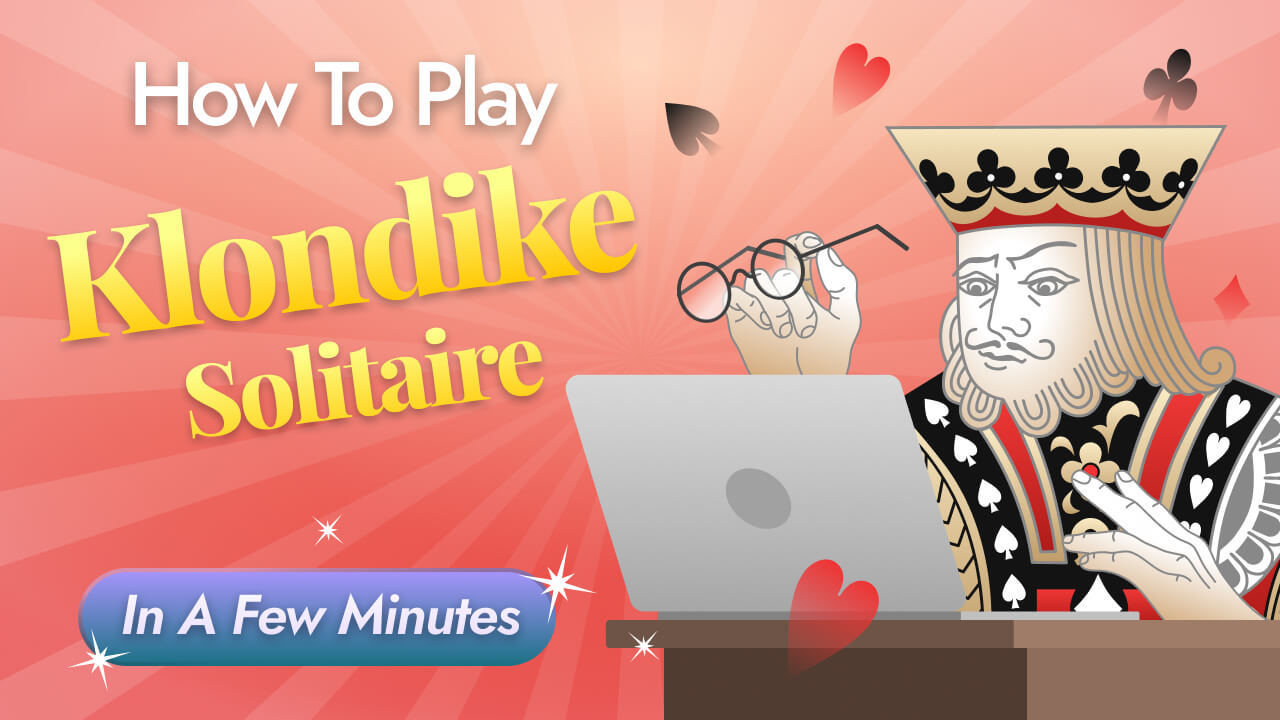
Card games have been around for several centuries, serving as a fantastic way to socialize and bring people together because of their competitive nature. However, Klondike Solitaire stands out by being a solitary game where your only opponent is your own personal best record! This focus on self-challenge is part of why Klondike Solitaire has endured over time, providing a way to stave off boredom and set your creativity loose.
Its gameplay focuses on bringing order to a chaotic arrangement of cards by building sequences based on rank and color. Since these cards are drawn randomly from the main deck, you can say that luck plays a role in whether you get an easily winnable game or not. However, a player’s skill and knowledge of the game is what truly dictates their win rate. And luckily, these are factors that are entirely under your control!
Klondike Solitaire not only offers a fun pastime but also acts as a great workout for your mind. In short, it’s a game you absolutely don’t want to miss out on!
Klondike Solitaire can be divided into four parts: the Tableau, the Stockpile, the Wastepile, and the Foundation piles. Having a solid understanding of how the cards move around these segments is crucial for becoming a successful Solitaire player. Not to mention, this game provides an excellent foundation that you can build upon to tackle more challenging and complex versions of Klondike Solitaire.
Played by millions of players worldwide, Klondike Solitaire eagerly awaits to be part of your gaming experience! So what are you waiting for? Start playing now!
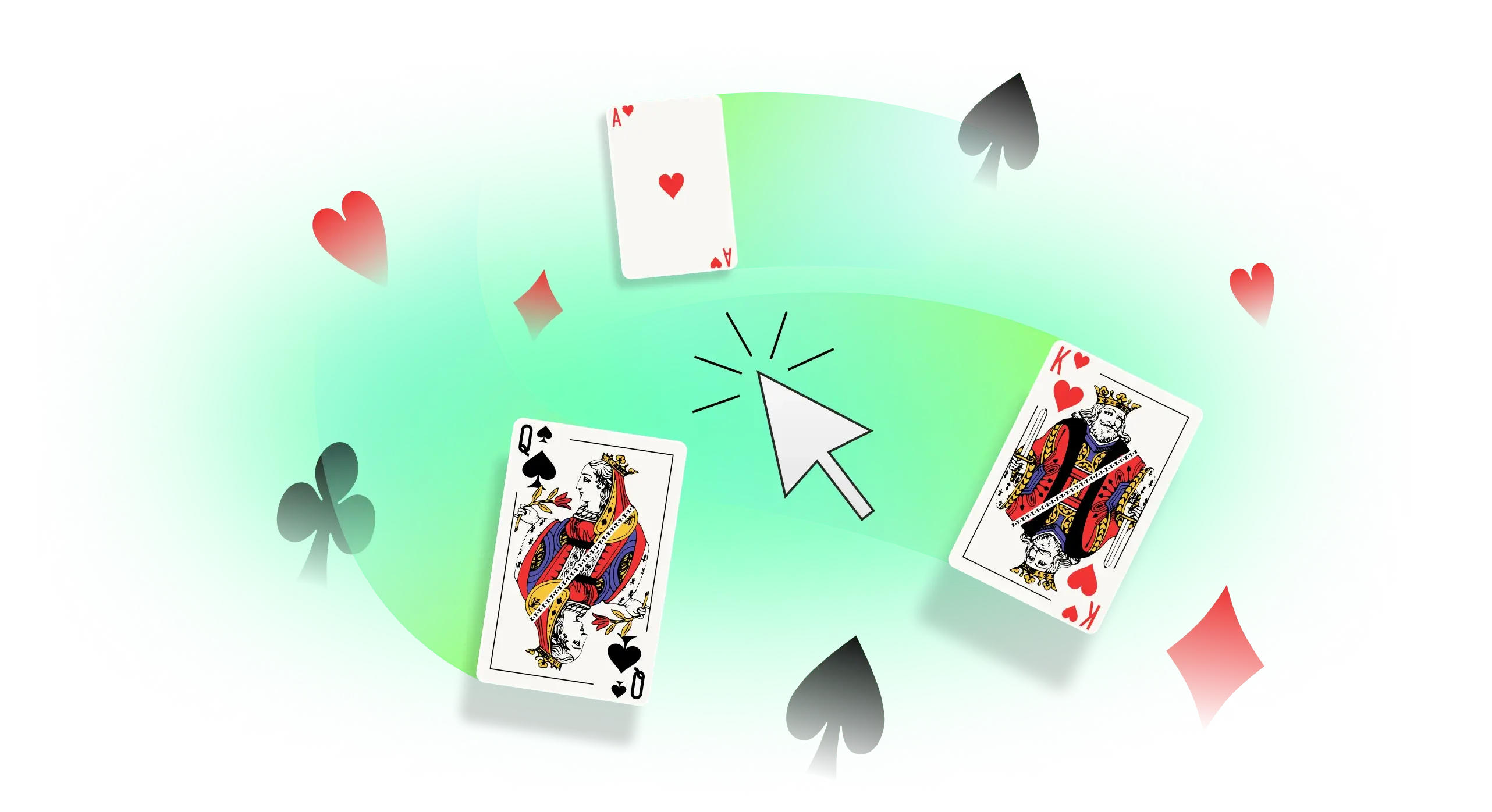
Building a Foundation pile for each suit in ascending order.
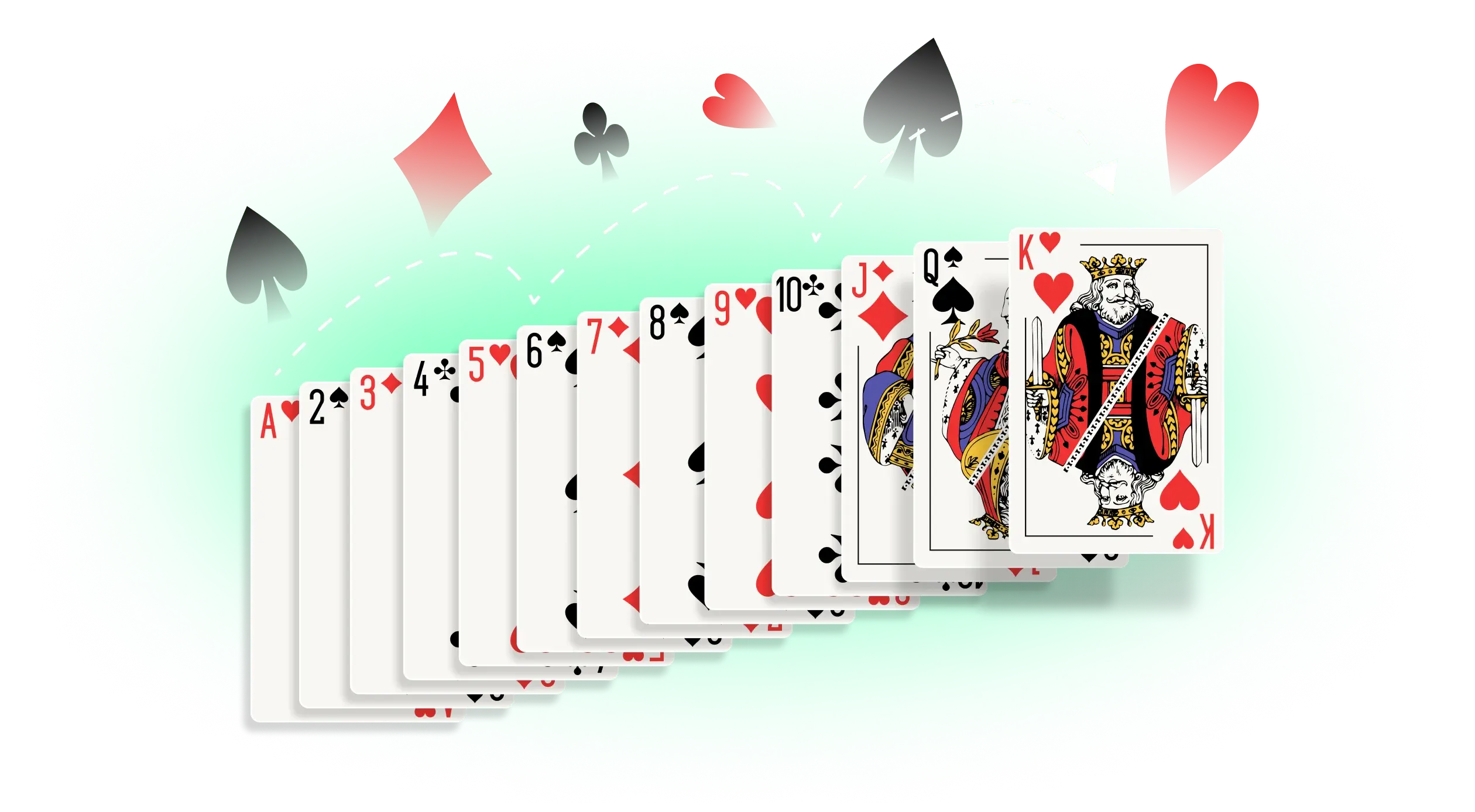
If you find yourself getting stuck in the game more often than you’d like, remember that the HINT button is always there for you to use. It highlights a moveable card and its destination to help you move your game forward.
Hotkeys are the ultimate time-savers regardless of what application or website you’re using. To make sure you’re getting the best experience on our platform, use these handy keyboard shortcuts for Windows and Mac!
Congratulations! By now you should not only have a good grasp of the game’s layout but should also be familiar with all the rules. However, we still recommend holding off on starting the game until you’ve explored a few key strategies that can significantly boost your chances of success at the game.
Now that you’re fully prepared to jump into the fascinating world of Klondike Solitaire, it’s a good time for us to tell you that this is just the beginning of your journey! Klondike Solitaire is a game that often merges its variants into new, more challenging versions. So once you become a Solitaire player, you never again have to worry about getting bored with a particular game — Solitaire is all about novelty!
We understand that playing Solitaire isn’t just about the game—it’s about the experience. Our platform is built to bring players to the heart of Solitaire. Your triumphs, challenges, and overall playing experience drive our purpose. Let’s win together!
Add The Solitaire to your desktop and never search for it again
The Tableau features 28 cards drawn randomly from the deck and arranged into seven columns. The number of cards in each column grows as you move from left to right. Remember that the first column has one card, the second has two, the third has three, and so on. Only the top card in each column is face-up and available for play.
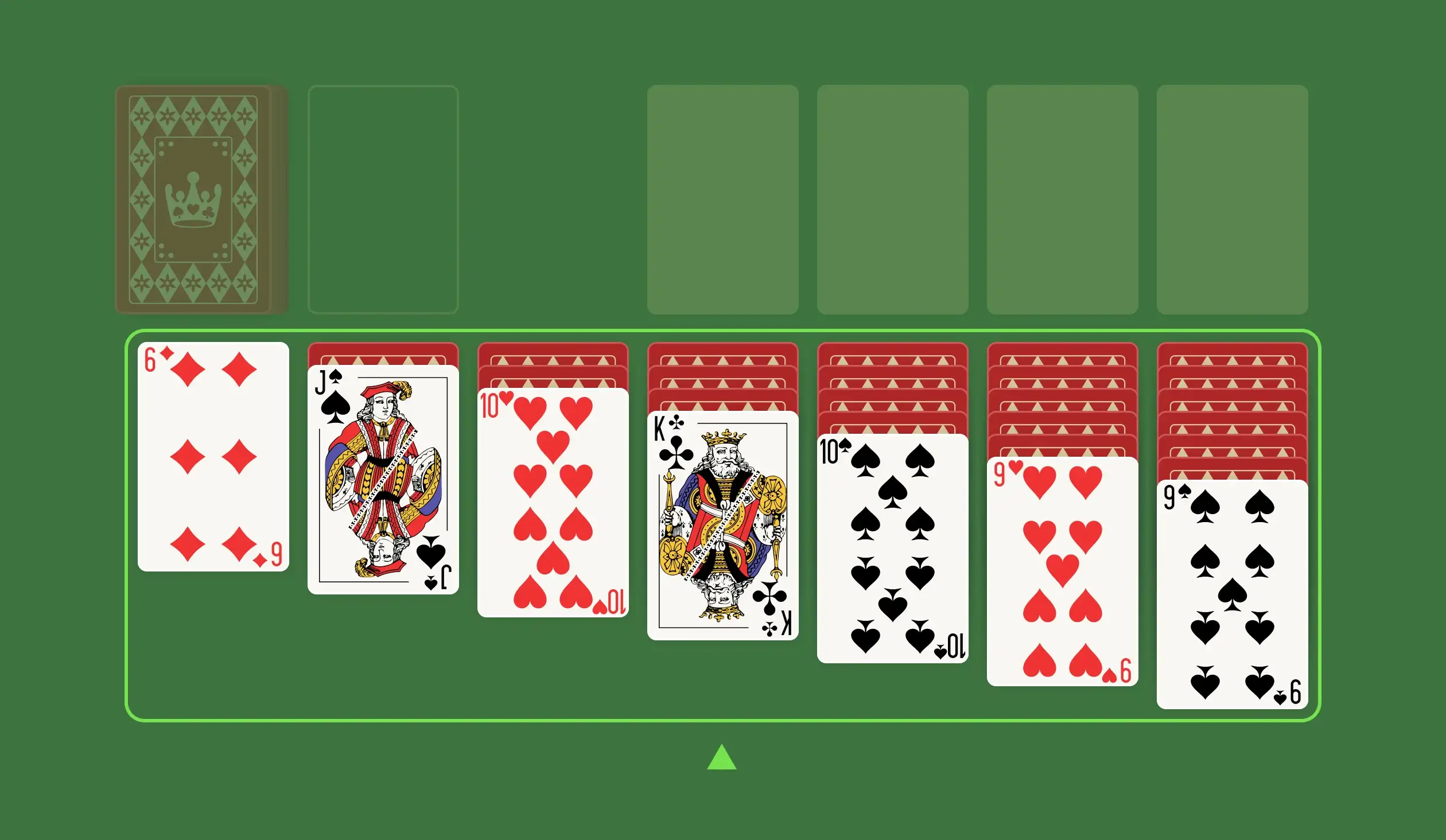
The cards not dealt into the Tableau are placed face-down in the Stockpile. Under the Turn-One rule, you draw one card at a time. Once a card drawn from the Stockpile is moved to the Tableau or Foundation piles, it can’t be returned to the Stockpile.
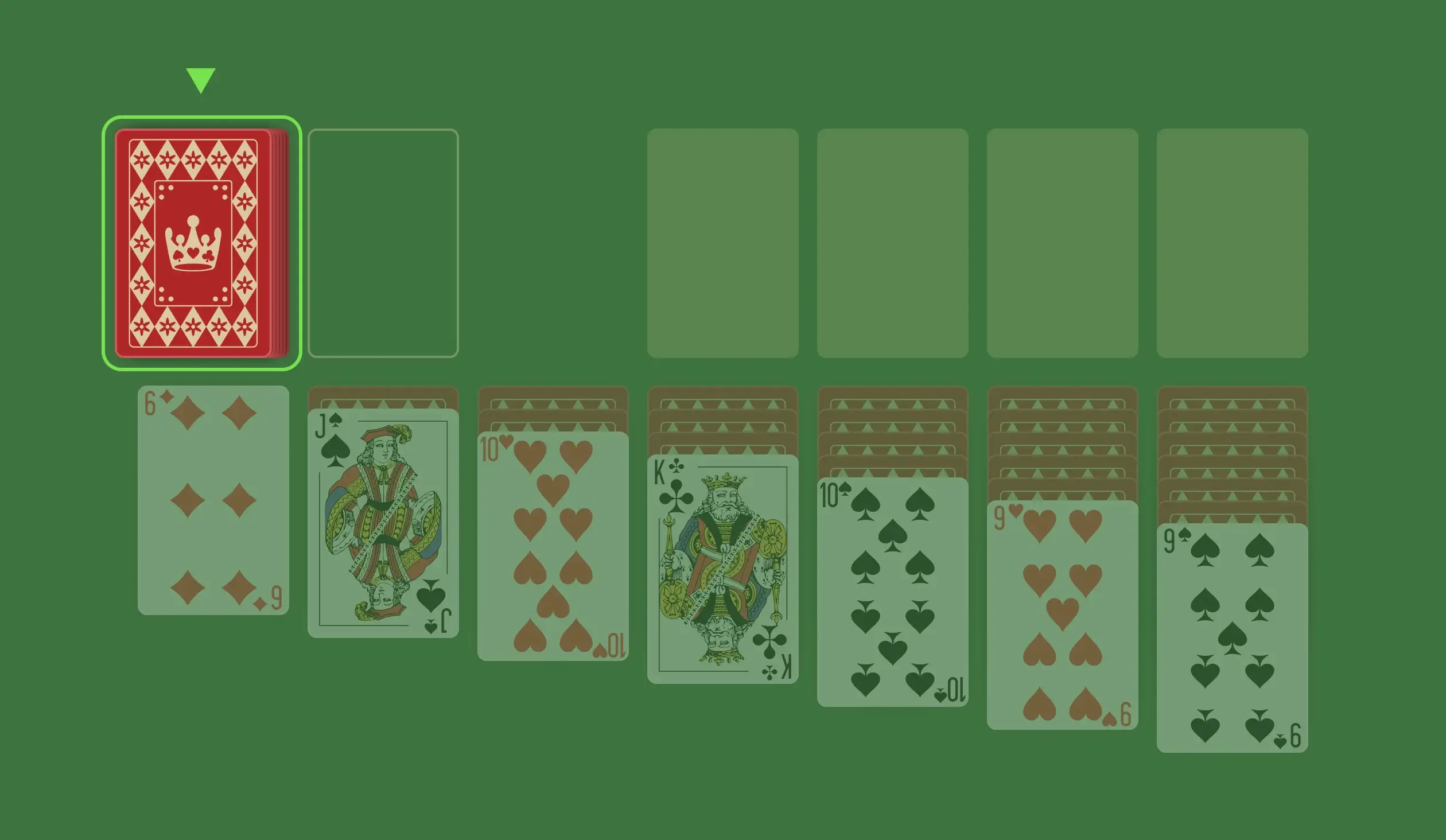
The Wastepile is the empty space next to the Stockpile, which houses the drawn cards. You can move these cards from the Wastepile to the Tableau or Foundation piles to help build sequences. When the Wastepile is full and the Stockpile is empty, you transfer all the cards back to the Stockpile and resume drawing from there.
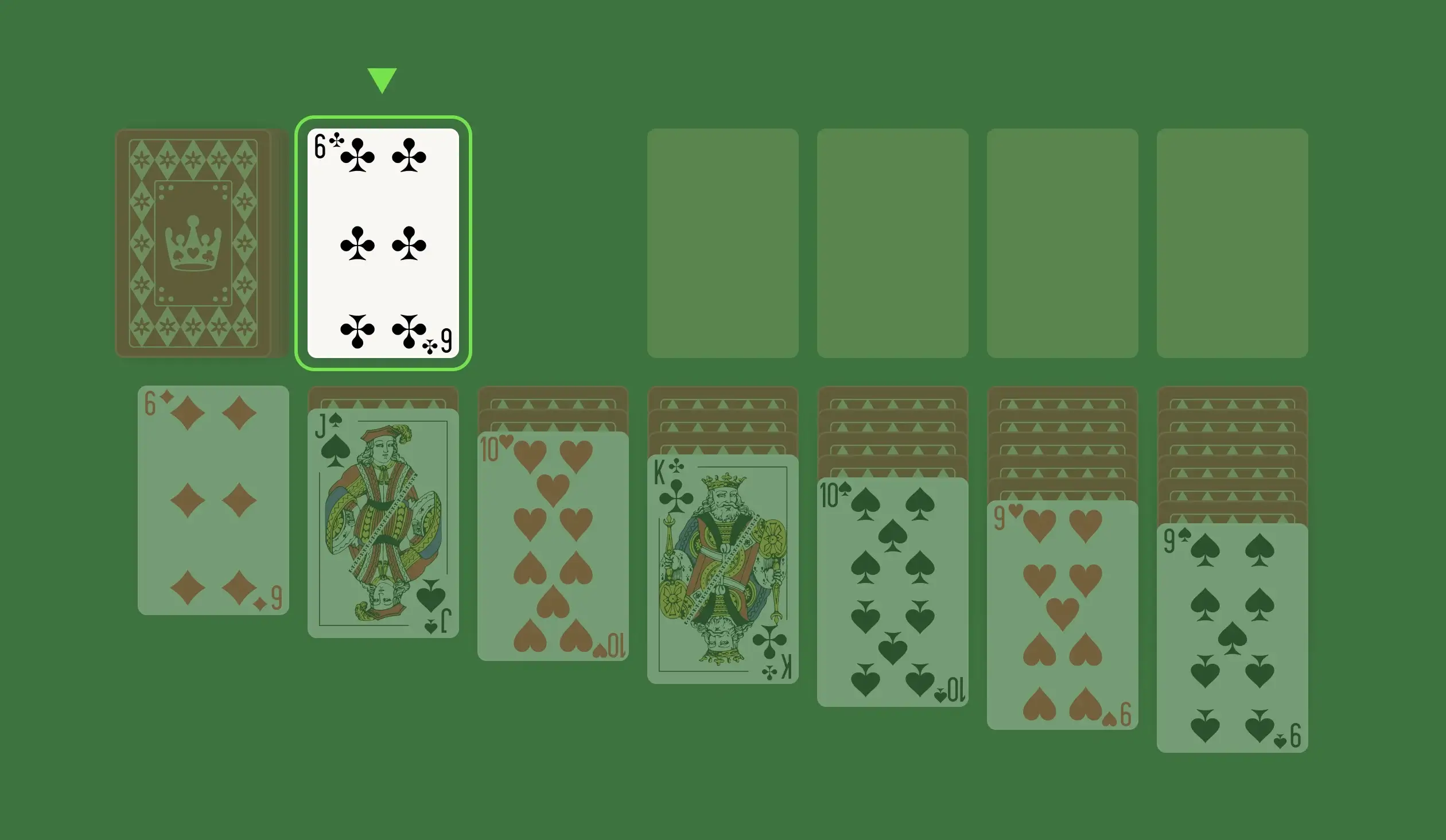
The Foundation consists of four piles, one for each suit. To win, you must fill each pile with cards in ascending order, from Ace to King. Cards can be moved to the Foundation from both the Stockpile and the Tableau. However, once a card is placed in the Foundation, it can only be moved back to the Tableau, not to the Stockpile.
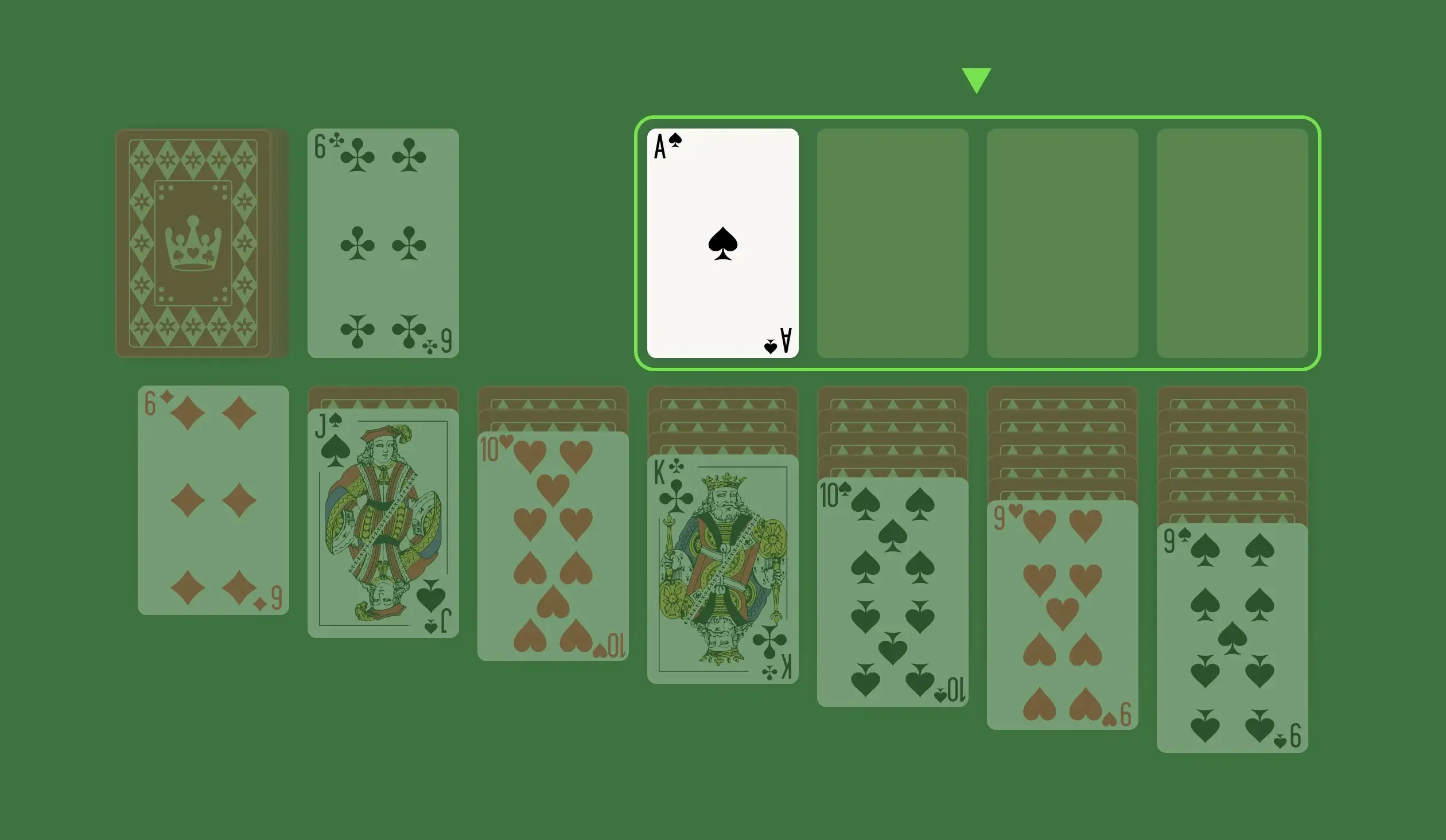
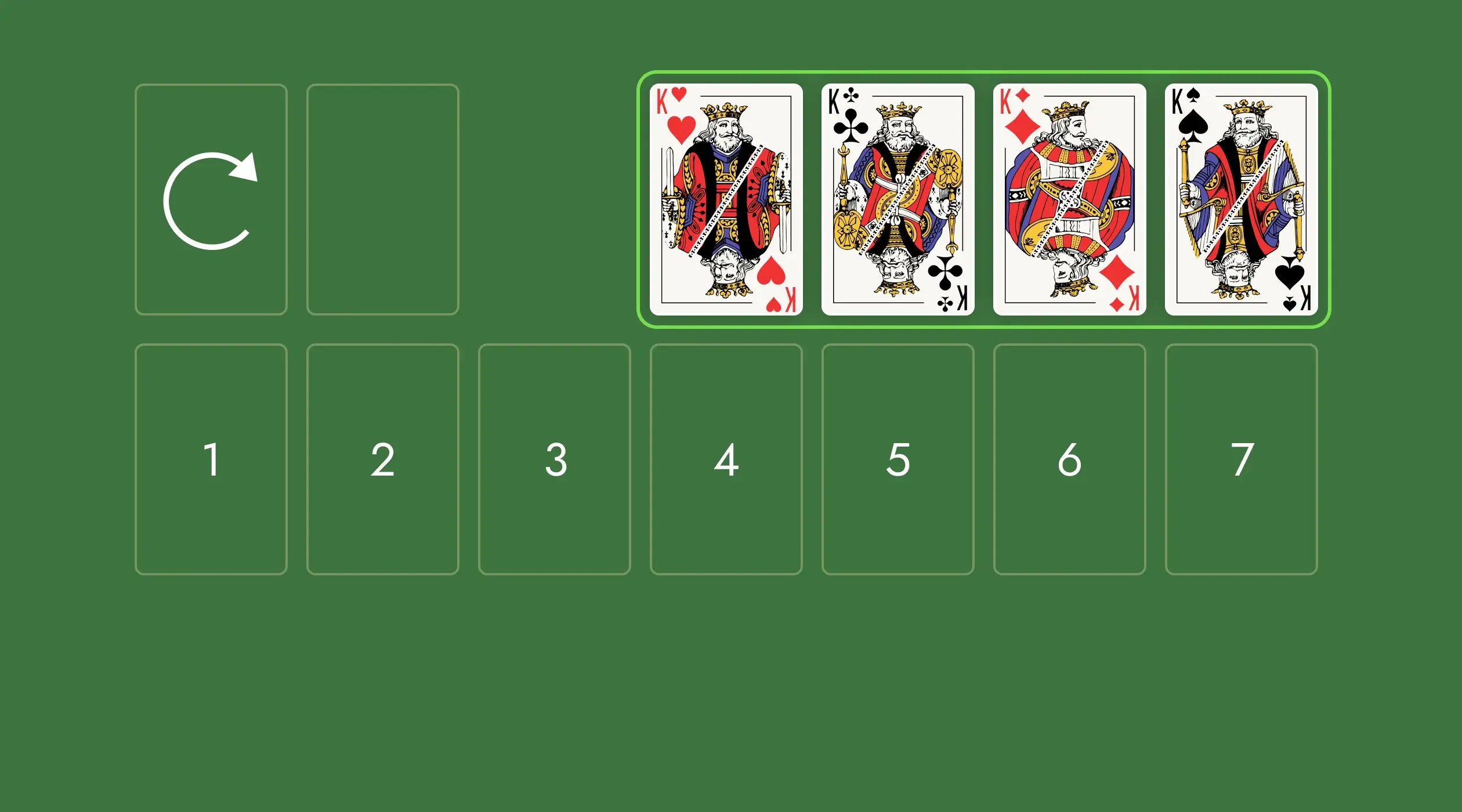

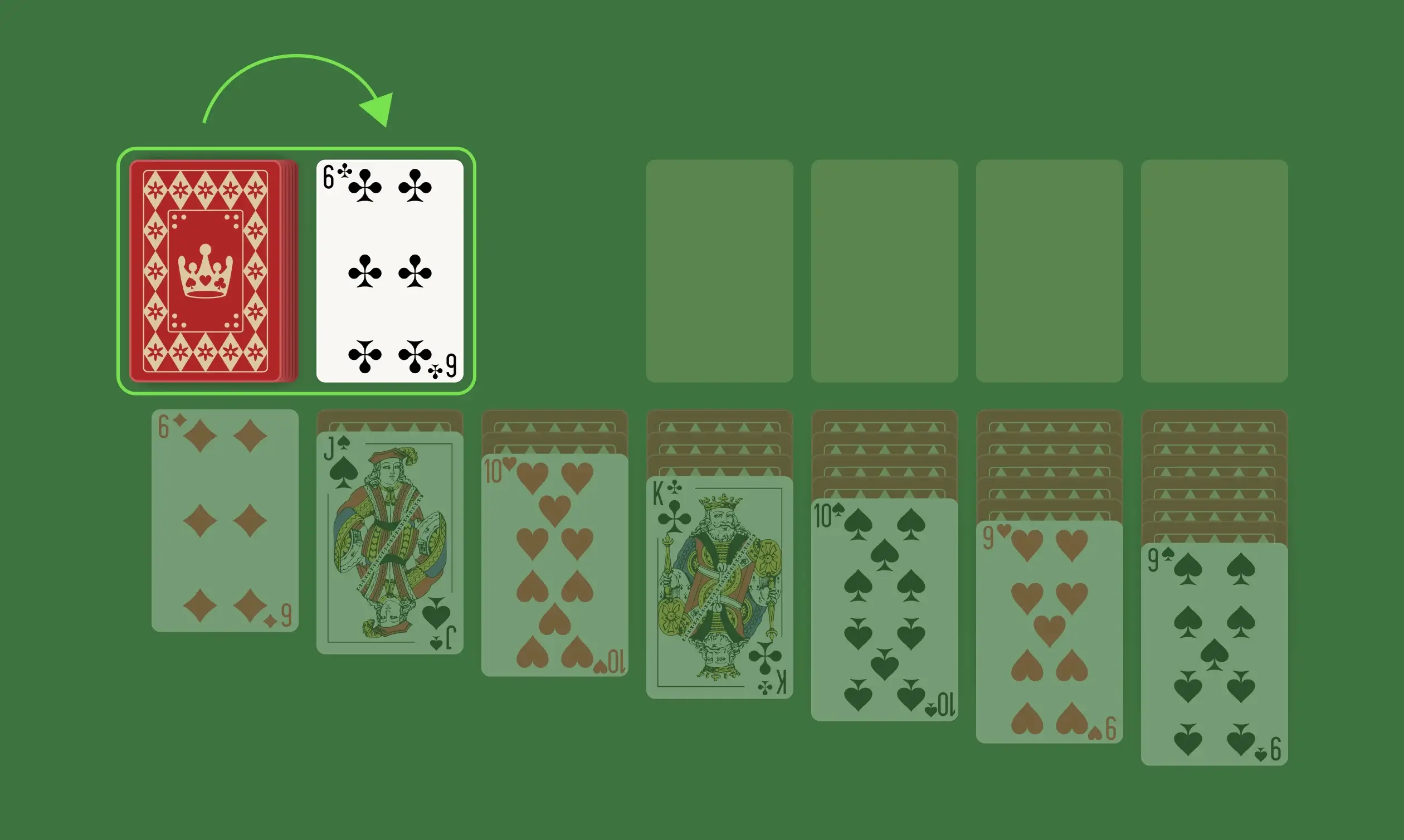
Unless you’re lucky enough to draw a Tableau that has at least one Ace among its topmost cards, your Foundation piles might sit idle until you finally uncover an Ace. The drawback of playing like this is that you’ll start building your Foundation piles much later, missing out on all those cards that could’ve been moved there during the early stages of the game. A wiser strategy, therefore, is to cycle through the Stockpile at the start of the game and move any Aces you find to the Foundation piles.
Oftentimes, you’ll encounter situations where you’ll empty a column in the Tableau. These openings provide a golden opportunity for you to deal with any accumulated Kings you might have in your Stockpile or the Tableau. These cards are often buried in a sequence, preventing you from uncovering the cards beneath them. Therefore, make sure to give preference to moves that lead toward empty columns. Otherwise, it becomes really difficult to progress with the game if you don’t have any spot to move Kings since they are the last cards to go to the Foundation piles.
The Stockpile might be a great way to introduce fresh cards to your layout and keep your game moving, but don’t become over-reliant on it. Remember that most of the game’s action is supposed to be moving cards already present in the Tableau. So before you draw cards from the Stockpile, be 100% certain that there are no more moves to make the Tableau. This strategy will prevent you from missing out on crucial moves that clear up the Tableau and potentially build sequences in the Foundation piles.
Mistakes such as moving a card to the wrong column or missing out on a card in the Stockpile might be avoidable with a more patient playstyle, but still, they’re very common. Now, you might think that in these situations, using the UNDO button is opting for the “easy” route of going back on your original decision. But in reality, using the UNDO button actually helps players get a better grip on the game. This is because the process of identifying and correcting mistakes closely mimics active learning, which is arguably the most efficient way to learn hard things.
The HINT button is a great way to take some load off your brain by having the game figure out the best moves to make. However, if you find yourself using it for every single move, it might be time to take a step back and realize that this strategy is actually removing all the challenges from the game. Considering that the appeal of the game rests on it being just challenging enough for your skill level, draining the difficulty from this game would only result in you getting bored of it more quickly. So make sure that you’re mindful about how frequently you hit that HINT button!
May 22nd is celebrated as National Solitaire Day. Microsoft introduced this day in 2018 to commemorate the anniversary of Solitaire’s inclusion in Windows.
There are over 500 known Solitaire variations, with the most popular ones being Klondike, Spider, and FreeCell!
The original creator of the first Solitaire game for Microsoft Windows was just an intern! His name is Wes Cherry, and he has never received any royalties for his work.
Microsoft included Solitaire in Windows to teach users how to drag and drop items using the mouse, a new skill for many at the time.
It’s said that Napoleon Bonaparte was a huge fan of Solitaire and reportedly often played the game during his days of exile on the island of Saint Helena.